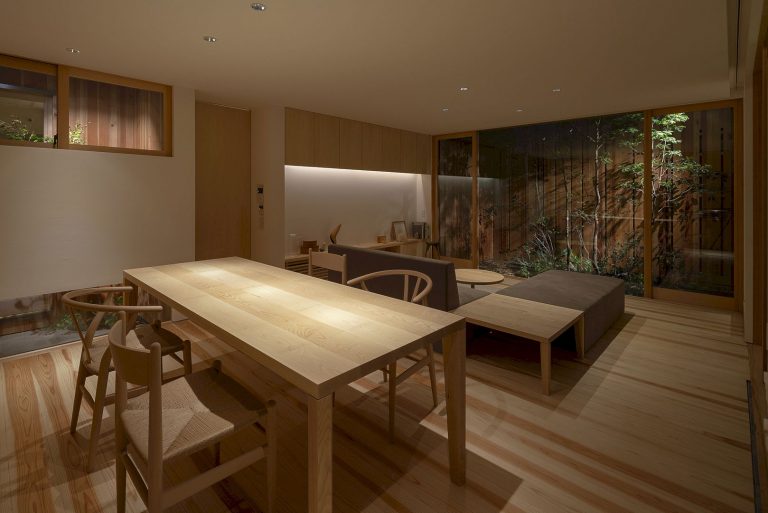Table Of Content

On average, the cost to build a home in Japan is $337,000. The price of a home, just like anywhere else, depends on size and location. If you want a tiny house that features Japanese design elements, then that would be your cheapest option.
Kelly Akashi: Formations
Each frame provides a generous open floor space while providing optimum earthquake protection. Six wooden frames linearly stretch from the front to the back and providing a sense of rhythm to the interior. From architect Shota Nakanishi, this house is in Kanazawa, Ishikawa prefecture, Japan. It was designed so its inhabitants could have a connection with natural light and wind while also enjoying the environment. 5.Interior Cabinet Views; They depict the overall design and layout of kitchen cabinets with dimensions. Originally trained in analog photography, Kelly Akashi (born 1983, Los Angeles) is drawn to materials like glass, wax, and bronze for their alchemical potential to change states.
Incarcerated at Poston: Historical Context from Densho, Seattle
Akashi also studied at the Staatliche Hochschule für Bildende Künste - Städelschule in Frankfurt am Main and received her BFA at Otis College of Art and Design. The artist has presented solo projects at the Aspen Art Museum (2020) and the SculptureCenter, New York (2017). Other notable group exhibitions include those at the Clark Art Institute, Williamstown, Massachusetts (2021); the Hammer Museum’s biennial, Made in L.A. (2016); the Museum of Contemporary Art, Detroit (2017); and the Musée d’art contemporain de Lyon, France (2017). As the winner of the 2019 Carolyn Glasoe Bailey Foundation Art Prize, the artist conducted a residency at the foundation in Ojai, California. The Japanese prefer apartments and rooms that face south.
Kelly Akashi: Formations Activity Guide

3.Roof Plan; The roof plan depicts the roof type and slope of each plane. Roof Plan; The roof plan depicts the roof type and slope of each plane. A separate bathroom space for the toilet features a compacted and elongated design. Interior spaces bordered with long corridors and narrow layouts uphold Japanese design elements.
How Much Does it Cost to Build a Japanese Style House?
One unique characteristic is how the homes are built according to their natural surroundings.
Rooms facing toward the south receive the most sunlight and are warmer during the winter months. Japanese homes don’t touch the ground due to the country’s high temperatures and humidity. To safeguard against periodic flooding, homes are built off the ground so they won’t incur water damage.

Situated in the heart of Tokyo, this six-story tall building houses residential, commercial, and retail spaces. The ground floor has a garden that includes trees and various greenery, and two sides that provide easy access. Inside, courtyards separate the three volumes that function as living spaces. The rooms inside this wooden bungalow are simple and almost modest, embracing a classic Japanese style. 6.Doors and Windows schedule; The schedule gives heights, lengths and levitation of windows and doors.
In the example above, the home has an indoor garden with a large roof that captures sunlight and allows for open living during bad weather conditions. However, direct light is adjusted according to each season, and provides cooler temperatures in the summer and warmer temperatures during the winter months. The word for a traditional Japanese home is “minka.” Japanese homes combine ancient architecture with modern minimalist concepts. The homes are characterized by internal courtyards, glazed walls, and open floor plans.
473000 Excavators. 60 Years. One Awesome Team in Akashi - Caterpillar Inc
473000 Excavators. 60 Years. One Awesome Team in Akashi.
Posted: Thu, 21 Jan 2021 15:43:48 GMT [source]
Upper Floor
She selected several of these to reproduce in the exhibition catalog alongside images shot during her visits. Tree branches and pine cones from Poston have also found their way into her sculptural work as bronze casts, witnesses to the incarceration and the decades that have unspooled since. The spacious kitchen and dining area overlook the interior second garden, separated by a glass sliding door.
Her sculptures and photographs evoke tangled feelings about time, impermanence, bodies and our relationship to nature. For her, these lofty themes are rooted not in philosophy or religion, but in the process of making things — and the “conversations” with materials that result. Grass building is from design studio Ryo Matsui Architects.
Although her works might appear spontaneous, Akashi says they are the cumulative result of many carefully considered decisions. “I don’t tend to do a drawing of a finished form,” she says. “I do different steps in the process, and then I want to see what that leads to.” She admits that sometimes the result is failure, like a glass work that shatters or a piece that isn’t ready for prime time. “You don’t know if it’s going to end up in a show or like, in the garden,” she laughs. Interior Cabinet Views; They depict the overall design and layout of kitchen cabinets.
With interior home designs, Japan’s influence is obvious. Japanese homes include living spaces that rely heavily on natural light, a concept found in many countries. The main living space occupies the majority of the ground floor, consisting of a lounge, kitchen, and dining with a view of a covered garden.




